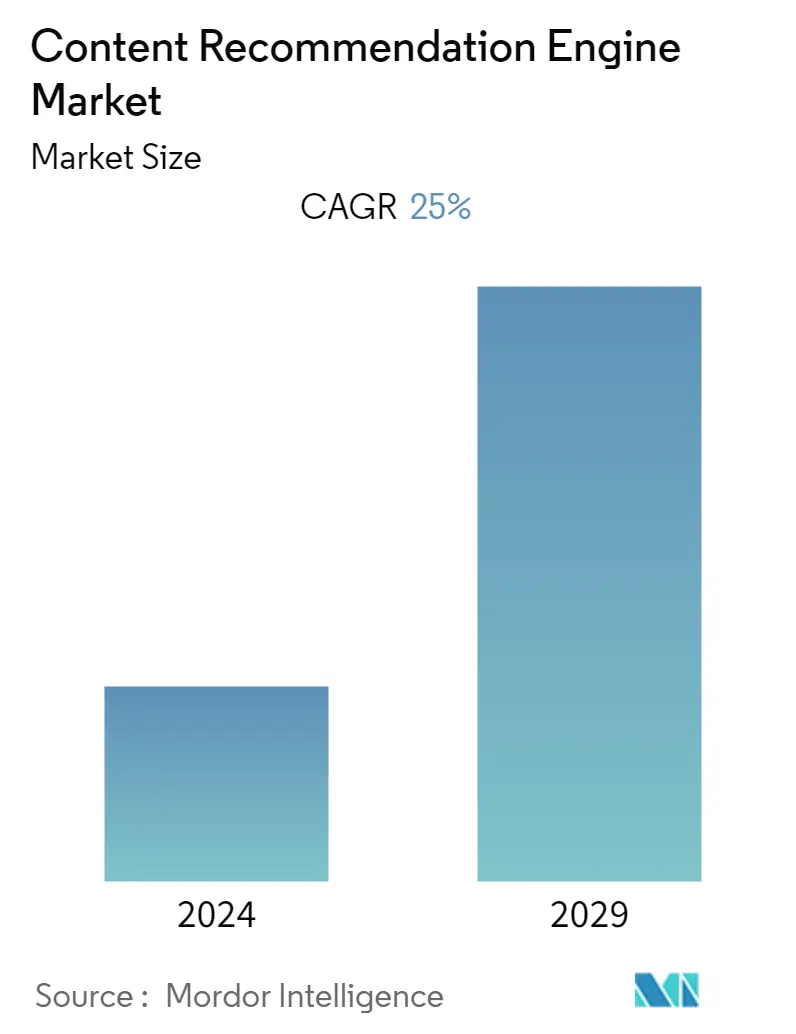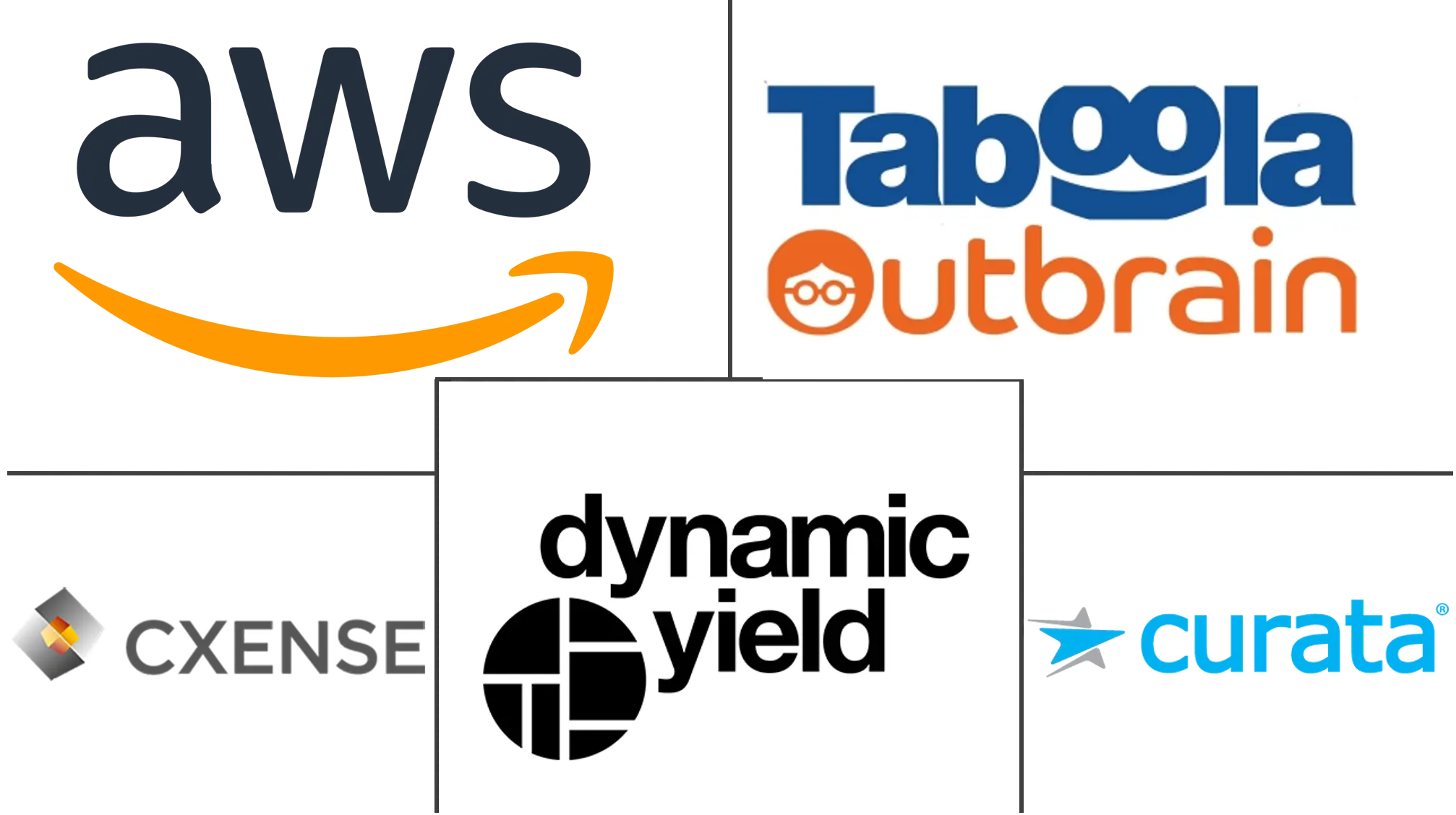Market Size of Content Recommendation Engine Industry

| Study Period | 2019 - 2029 |
| Base Year For Estimation | 2023 |
| CAGR | 25.00 % |
| Fastest Growing Market | Asia Pacific |
| Largest Market | North America |
| Market Concentration | Medium |
Major Players
*Disclaimer: Major Players sorted in no particular order |
Need a report that reflects how COVID-19 has impacted this market and its growth?
Content Recommendation Engine Market Analysis
The content recommendation engine market is expected to reach a CAGR of 25 % during the forecast period 2020-2025. Content recommendation engines have been around for some time now and are being continuously improved and upgraded for delivering services as per individual user preferences. It uses Artificial Intelligence to identify and categorize content by topics. However, despite the considerable amount of researches done in the context of recommender systems, the specific problem of integrating tags into standard recommender system algorithms, especially content-based ones, is less explored than the problem of recommending tags. Folksonomies provide new opportunities in the field of recommender systems which can cater towards the significant growth.
- The advancement of digitalization across emerging economies drives the market. The number of people around the world using the internet has grown to around 4.54 billion, which is an increase of 7 % (298 million new users) compared to January 2019 (source: Global Web Index). Further, there are 3.8 billion social media users in January 2020, and this number is increasing by more than 9 % annually (321 million new users). Also, online via mobile device e-commerce purchase in the third quarter of 2019, Indonesia, Thailand, and the Philippines were having the highest user with 80%, 69%, and 66%, respectively. Such trends are focusing the players for the adoption of a content recommendation engine to increase the revenue, retention, and traffic.
- Further, the advantage in functionality over collaborative based filtering drives the market. Content-based recommenders exploit only ratings provided by the active user to build her/his own profile. Instead, collaborative filtering methods need ratings from other users in order to find the 'nearest neighbors' of the active user. Also, Content-based recommenders are capable of recommending items that are not yet rated by any of the users. As a consequence, they do not suffer from the first-rater problem, which affects collaborative recommenders, which rely only on users' preferences to make recommendations.
- However, Limited Content Analysis is a major challenge for market growth. Content-based techniques have a natural limit in the number and type of features associated, whether automatically or manually, with the objects they recommend. The domain knowledge is needed for it. No content-based recommendation system can provide the suitable suggestions if the analyzed content does not contain enough data to discriminate items the user likes from items the user does not like. To sum up, both automatic and manually assignment of features to items could not be sufficient to define distinguishing aspects of items that turn out to be necessary for the elicitation of user interest.
- Further, in the COVID-19 pandemic, the market has not slowed down as the retention rate for the e-commerce sector, media, and entertainment segment has risen sharply, which caters to the adoption of content recommendation engine platform. Accenture says they expect a 160% increase in e-commerce purchases from new and low-frequency buyers. Also, the rise in the penetration of the OTT platform has boosted the market. In India, most users are more likely to switch towards paid OTT audio subscription, only if the charges are approximately Rs 25 per month, adding that 62 percent of consumers surveyed are willing to switch to paid subscription models in the pandemic period.
